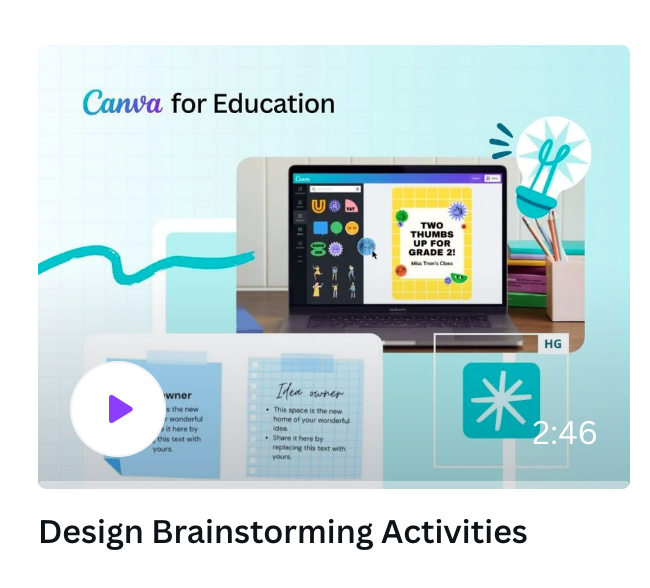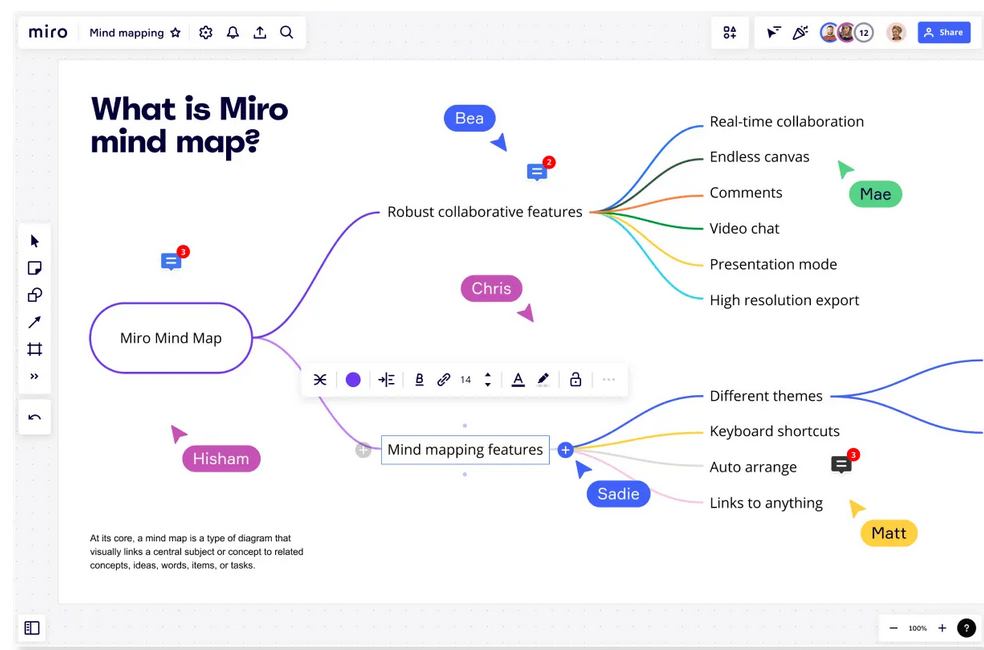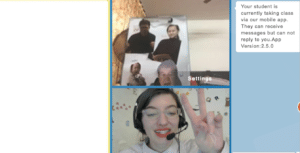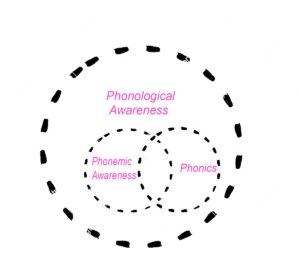Do your students freeze up during free-writing assignments, stare at your piece of paper with dread before starting your reading response, or feel overwhelmed by the thought of writing a 20-page research paper? Teach students to brainstorm by making a mindmap.
Fortunately, there are many techniques you can use to help your students maximize their learning, and one of the most effective of these is mindmapping.
Mindmapping is a visual brainstorming technique that helps students organize and categorize their ideas. It involves creating a diagram that starts with a central concept, and then branches out into related subtopics and ideas. The resulting Mindmap is a colorful and visually appealing way to display information, and it can help students remember new vocabulary and concepts more effectively.
Why Teach it?
There are several benefits to teaching Mindmapping to your ESL students, including:
- Improved Memory: Mindmapping helps students organize information in a way that is easy to remember.
- Enhanced Creativity: Mindmapping encourages students to think creatively and explore new ideas.
- Increased Engagement: Mindmapping is a fun and interactive activity that helps keep students engaged in the learning process.
- Better Note-Taking: Mindmapping can be a useful tool for taking notes in class or when studying at home.
Brainstorming Methods
There are many ways to brainstorm. Mindmapping is one way we can brainstorm, but there are many others. You can make outlines, or write lists, or draw pictures. In addition, you can also use brainstorming as part of pre-reading strategy with students.


You can use any generative process to help you brainstorm! Here, we focus on mind mapping because it is relatively basic but still robust enough to let you apply it to many assignments, whether they are simple or complex.
How to teach students to Mind Map
- Write the Main Topic. Write the main subject in the center of the mind map, for instance “School Reform”. If you are doing a reading response, then this main topic should be the question or prompt that the text gave you.
- Add subtopics. Draw some branches from the center topic and add some related information. You can write some subtopics such as “legislation”, “history,” and “data”. The order of how you write the subtopics is not important. The point is to write as many as you can think of or, if you are utilizing a text, as many as you can find in the text. If you are finding them in the text, then CITE the information too (with page number and author).
- Add Sub-Topics. Keep on adding to your main topics by writing some sub-topics. You can draw more lines from each topic and add the subtopics in this manner. You can use very short phrases or even single words.
- Done!
Here’s a very basic example from my class
This mindmap is a Reading Comprehension Mindmap.
1. Reading comprehension mindmap
A reading comprehension mindmap is a useful tool for helping students understand and remember what they’ve read. Have students read a text and then create a mindmap that summarizes the main ideas and key details. Encourage them to use different branches for different concepts and to include supporting evidence, quotes, and examples.

This is just one kind of mindmap. You can also make an
2. Idea generation mindmap
An idea generation mindmap is a great way to brainstorm ideas for a project, essay, or presentation. Start with a central idea in the middle of the page and then branch out with related ideas, connecting them with lines. Students can use different colors, shapes, and symbols to make their mindmap more visually interesting. Encourage them to think outside the box and come up with unconventional ideas.
Making an idea generation mindmap can help students structure their writing even if they are just responding to a 5-minute writing prompt. This works great for completing state assessments or other kinds of standardized testing. It can even help them when writing responses for the IELTS.
3. Vocabulary mindmap
A vocabulary mindmap is a great way to help students learn and remember new words. Start with a central word and then branch out with related words, synonyms, antonyms, and examples of how the word is used. Encourage students to use images and symbols to help them remember the meaning of the word.
4. Historical events mindmap
Finally, you can make historical events mindmaps with your students to enliven the connections between different historical events for students. Start with a central event and then branch out with related events and the causes and effects of those events. Encourage students to use images and symbols to represent different events and to include relevant dates and timelines.

Canva has some helpful resources for designing brainstorming activities and mindmaps that you might want to check out.
Group Mindmap

Guide students to make an online mindmap with their research peers. Check out this nifty website that lets them map their ideas electronically.
Create and Use Mindmaps for Maximum Learning
Teaching Mindmapping to your ESL students can be a fun and effective way to help them retain new information and improve their language skills. By incorporating this technique into your lessons, you can help your students become more engaged, creative, and successful language learners. Try it out and see how it goes.
Check out the post below to learn more about encouraging students to brainstorm to improve their writing and general English skills.
Practice English: Creative Writing Prompts

















